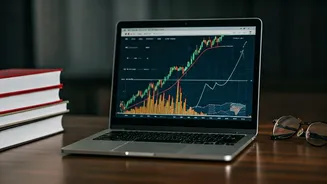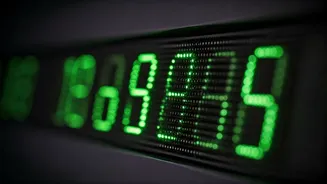Call Options Explained
Call options are financial derivatives that give the buyer the right, but not the obligation, to purchase an underlying asset at a predetermined price
(the strike price) before a specified expiration date. The primary advantage of call options lies in their limited risk; the maximum loss is typically the premium paid for the option. However, the potential gains are substantial, as the value of the option can increase significantly if the underlying asset's price rises above the strike price. This favorable risk-reward profile makes call options an attractive strategy for traders who anticipate an increase in the price of an asset, as the initial investment is smaller than buying the asset outright and the leverage can result in substantial returns with relatively limited capital outlay. However, the probability of the call option expiring worthless is higher due to the need for the underlying asset price to move favorably before the expiration date.
Futures Contract Overview
Futures contracts, on the other hand, are agreements to buy or sell an asset at a predetermined price on a specified future date. Buying a futures contract commits the buyer to purchase the underlying asset. The risk in futures contracts is considered higher due to the obligation to buy the asset, irrespective of its price movements. The reward, though, can be substantial if the asset's price increases. Futures trading requires a larger initial margin, which is a percentage of the contract's total value, providing more leverage but increasing the risk of significant losses if the market moves unfavorably. Unlike call options, a futures buyer is fully exposed to price fluctuations, making the potential loss potentially unlimited. Therefore, futures are generally considered riskier due to the full commitment required to buy the asset at the agreed-upon price.
Risk-Reward Comparison
When comparing call options and futures, the risk-reward ratio often favors call options. Call options provide a greater reward-to-risk ratio. The risk is limited to the premium paid, while the potential reward is potentially unlimited. Futures contracts, while also offering significant potential gains, expose the buyer to unlimited risk if the price of the asset decreases. The success rates, however, tend to be lower for call options compared to futures buys. This disparity arises because call options are time-sensitive and require the underlying asset's price to rise above the strike price before expiration. This added element of time and the need for a specific price movement contribute to a lower success rate. In contrast, a futures contract benefits from any upward price movement.
Success Rate Factors
Several factors affect the success rate of call options. Time decay, also known as theta, is a key consideration. As an option nears its expiration date, its value decreases due to time erosion, reducing the probability of the option being in the money. Implied volatility also plays a significant role; the higher the implied volatility of an asset, the greater the likelihood of significant price movements. However, this also implies a higher premium for the option. Economic conditions, market sentiment, and the specific underlying asset's characteristics all contribute to the probability of success. Traders must analyze these factors to improve the odds of successful option trading. Conversely, the success of futures trades depends more directly on the general market trends and the accuracy of the trader's price predictions, though risk management is still crucial to limit potential losses.
Strategic Considerations
Traders need to consider their risk tolerance, investment goals, and market outlook when choosing between call options and futures. For those who are risk-averse and have a short-term bullish view, call options can be more suitable due to their limited risk profile. Traders with a higher risk tolerance and a longer-term bullish view might find futures more appealing. The choice also depends on the specific asset being traded, market conditions, and the trader's understanding of the associated risks. Effective risk management, including setting stop-loss orders and diversifying investments, is crucial irrespective of the chosen strategy. Additionally, traders should carefully analyze market trends and conduct thorough due diligence before entering into any trading position.













